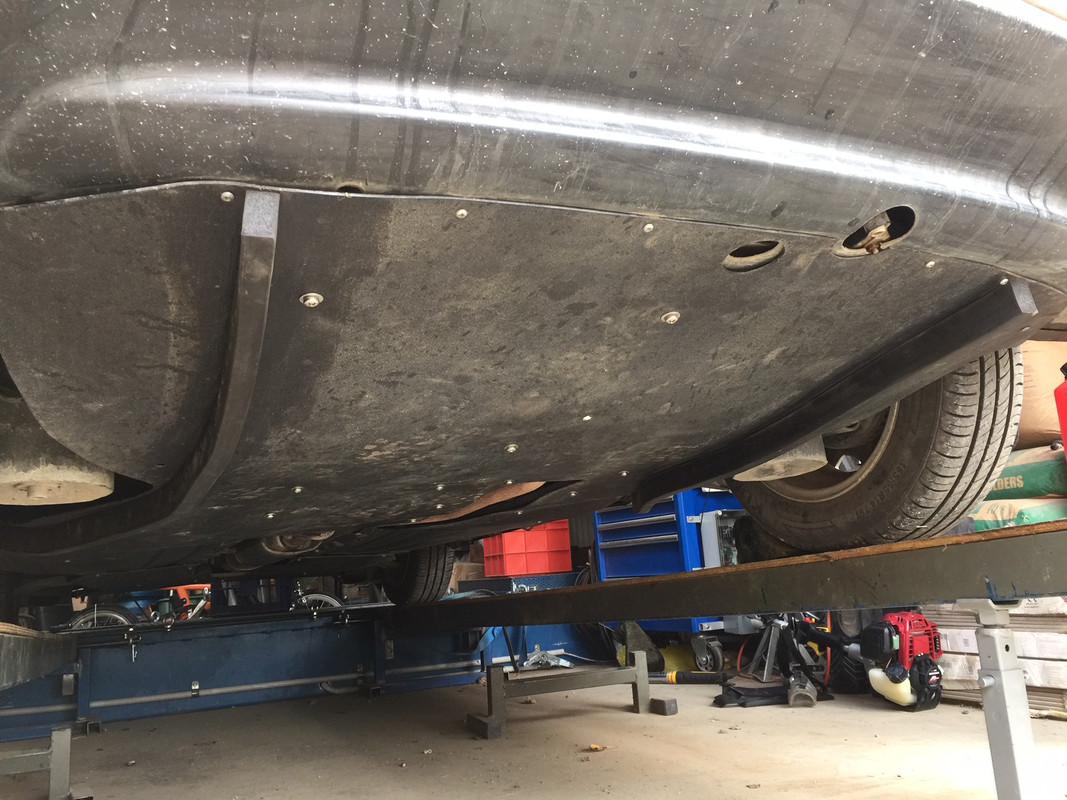Quote:
Originally Posted by JulianEdgar

Glue didn't work so I used lots of screws from the other side.

Measured results better than without them, but nowhere as good as with the much deeper plywood strakes. |
Went for my first proper drive today with the rubber longitudinals in place. I am confident that downforce has increased.
Because I run my own air suspension system, I am very sensitive to ride quality - ie I am always judging it. (The front springs have always been borderline over-stiff. I run extra air canisters to soften their rate, but typically they're still a bit stiffer than I'd like.)
I've noticed before - and commented on - the fact that ride quality improves with downforce. I think this is the case for two reasons. (1) the sprung/unsprung weight ratio improves, and (2) the effective spring rate goes down. Now, for the latter, in a car with normal steel springs, you'd say the static deflection has increased, indicative of a lower natural frequency (ie softer suspension). But with my air system, ride height is automatically maintained - so static deflection is constant. But to maintain ride height with a higher load, more air is pumped in. And the more air within the spring, the softer its rate.
Tonight I drove on a highway that I drive on often. 110 km/h speed limit. Bumps (eg filler strips over bridges) where normally I notice impact harshness were different - softer. It's difficult, because I have been driving my wife's W212 Mercedes, which has quite poor ride quality compared with the air suspension Insight. But I'd still bet money that the ride quality of the Insight has improved since I added the rubber underfloor guides.